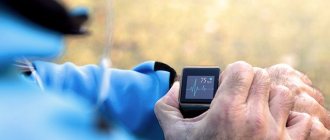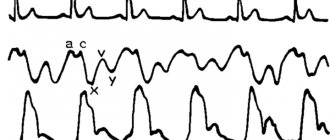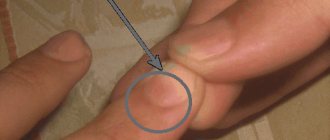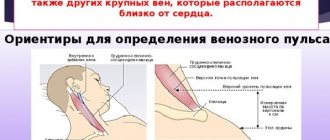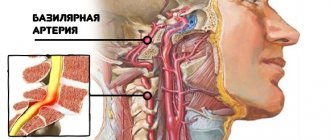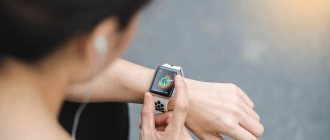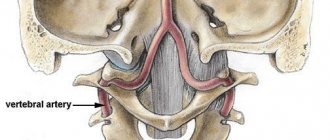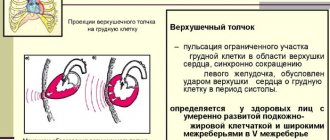To measure the pulse on the radial artery, use 2-4 fingers of the other hand to press points near the base of the thumb and count the beats for 1 minute. If it is difficult to find the pulsation in the arm, then for measurement they find the carotid artery on the side of the Adam's apple. For hardware determination, automatic, semi-automatic, and pulse oximeter tonometers are used.
Athletes can use a simplified method - counting in 10 seconds and multiplying by 6, fitness bracelets, trackers. An accelerated pulse (from 90 beats) occurs during physical activity, stress, heart disease, and hormonal disorders.
Slow (below 60) is characteristic of poisoning, brain diseases, and is normally found in well-trained athletes. Weak pulsation occurs with inflammation and atherosclerotic damage to the arteries. If there is no pulse in the carotid artery, then urgent resuscitation is needed, as this means cardiac arrest.
How to measure pulse: available methods at home
You can measure your pulse at home manually - determine the pulsation point of an artery (most often the carpal or carotid), then count the beats per minute. There are also mechanical measurement options; the features of the most common methods are indicated in the table.
| What is measured | Advantages | Flaws |
| Palpation (palpation) | No equipment needed, can be calculated at any time | You need a watch with a second hand, it’s not always possible to catch a weak wave |
| Tonometer semi-automatic, automatic | Immediately shows pressure and pulse, can be saved in memory and compared | Not suitable for patients with complex arrhythmias |
| Pulse oximeter | Blood oxygen saturation and pulse are measured, accurate results | Purchasing is advisable only in case of heart and pulmonary failure, blood diseases |
| Fitness gadgets: bracelet, tracker | Measurements take place throughout the day, showing the intensity of exercise and calories burned | Not all models are distinguished by measurement accuracy, especially in case of heart rhythm disturbances |
| Apple Watch | Many functions, quick measurement, convenient for training | |
| Fitness headphones | You can listen to music during class at the same time |
Heart rate measurement in various conditions
To measure your heart rate during training and at rest, it is important to take into account different rules: during exercise you need to stop, take 2-3 breathing cycles and then count the beats.
If the patient needs to know the heart rate at rest, it is better to sit on a chair, relax and count the pulse fluctuations after 10 minutes of rest. In the first case, you can count the pulse in 10 seconds and multiply by 6, and in the second, it is recommended to measure exactly 1 minute.
Pulse counting time in seconds
The heart rate is always determined in 60 seconds, but during sports activities, to speed up measurements, it is counted in 10 or 15 seconds and then multiplied by six or four. It is best to count the pulse on your hand per minute, since this option will give the most accurate result . For diseases of the heart and blood vessels, under any conditions, minute measurements are recommended, because short intervals may show unequal results.
Where is the pulse, what points to look for on the body
The pulse is determined in the arteries whose pulsation points are closest to the surface of the body. For patients with vascular diseases of the extremities, the best option is the carotid artery; it is also used in severe condition, low blood pressure and weak pulse filling. To do this, you need to feel your Adam’s apple, then move your index and middle fingers a little to the side (1-2 cm) until you feel a distinct pulsation.
The second artery, which in most cases is used to determine the pulse, is the radial artery. The measurement point is located at a distance of 2-3 cm from the base of the thumb along the inner surface of the wrist joint. If it is necessary to study the condition of the vessels of the lower extremities, measurements are taken on the legs:
- femoral artery - in the inguinal triangle near the inguinal fold;
- popliteal - along the back of the thigh near the knee joint;
- dorsum of the foot - between the metatarsal bones near the ankle joint;
- tibial - along the inner surface of the ankle.
In case of injury or vascular diseases, the doctor must check the pulse at 2-3 points along the large arteries supplying the damaged area.
How to find your pulse
To feel the pulse, you need to lightly press the skin at the selected point with two or three half-bent fingers. If the pulsation is felt weakly, then you can increase the pressure a little, but if the pressure is strong, the measurements will be incorrect and discomfort will occur. If it is difficult to find a point on the wrist, then the pulse can almost always be determined on the carotid artery.
What they measure: home appliances and gadgets for athletes
The most popular home device for measuring pulse is a tonometer with automatic display of heart rate and blood pressure. Depending on the model, the cuff is located on the shoulder or wrist joint, so measurements are taken on the brachial or radial artery. Important conditions for correct determination:
- comfortable position with back support;
- cuff at heart level;
- after 10-15 minutes of rest;
- an hour after eating, drinking coffee, strong tea, taking a hot bath, smoking.
Measurements with a pulse oximeter at home are quite rare, since its main purpose is to determine blood oxygen saturation. The device's sensor looks like a clothespin attached to your finger or earlobe. Models for newborns can be made in the form of booties.
The indicators are displayed on the screen, there is a sound alert function for critical oxygen levels and an excessively rapid pulse. A pulse oximeter is needed for oxygen deprivation of organs for patients with diseases of the heart, lungs, blood, brain, and sleep apnea syndrome (breathing stops during sleep).
Pulse oximeter
All other fitness gadgets are not classified as medical products, so they are best used by relatively healthy people and athletes. They differ only in the set of additional functions:
- distance traveled;
- calories burned;
- determining the intensity of physical activity;
- control over sleep levels;
- the ability to listen to music during class (headphones with a heart rate measurement function).
Watch this video from Dr. Komarovsky about when you should buy a pulse oximeter and how to use it:
Why is heart rate measured?
Heart rate (HR) is measured to determine the work of the heart muscle, this is important for diagnosis:
- tachycardia (beats per minute from 90 per minute) - can be physiological (without disease) during physical and emotional stress and with heart disease;
- bradycardia (pulse up to 60) – normally appears in well-trained athletes, but is more often found with pathology of the heart muscle.
Medications, caffeine, alcohol, and smoking affect heart rate. There are also congenital diseases that occur with an accelerated or slowed pulse.
Norm in indicators
Normally, heart rate indicators depend on age (see table).
| Age | Heart rate interval (beats per minute) | Averages |
| 1-3 years | 95-170 | 140 |
| 4-6 years | 85-130 | 105 |
| 6-12 years | 85-120 | 90 |
| 12-18 years old | 75-110 | 95 |
| 18-50 years old | 60-90 | 70 |
| 50-75 years | 65-95 | 75 |
What allows you to set the measurement
Pulse rate measurement allows you to determine the severity of diseases:
- tachycardia – heart failure, angina pectoris, myocarditis, defect, non-cardiac pathological conditions: excess of thyroid hormones, adrenal glands, anemia, attack of pain, temperature;
- bradycardia - heart attack and its complications, weakness of the heart muscle, non-cardiac causes: poisoning, renal failure, typhoid fever, brain contusion, inflammation of the meninges (meningitis).
How to correctly record the result
Measurement results should be correctly recorded in the form of shock indicators per minute. If pulse rate is monitored, the measurement time is also indicated. For example, the entry might look like this:
- 8-00: Heart rate 82 beats/min;
- 12-00: Heart rate 78 beats/min.
Which option is the most accurate?
The most accurate option for measuring heart rate is an electrocardiogram; only it can show the true rate of contraction of the ventricles of the heart. This is especially important for rhythm disturbances. In patients with complex forms of arrhythmia, it is impossible to correctly calculate pulse beats, since not all waves of contractions reach the peripheral arteries (a symptom of pulse deficiency).
If the pulse is rhythmic and well-filled, then counting beats per minute gives a fairly accurate result. When using hardware methods, reliable measurements can only be obtained using medical devices (tonometers, pulse oximeters). All other gadgets are suitable for monitoring heart function during sports.
Heart rate measurement results
During the measurement process, you can obtain information about the fullness of the bloodstream of the vessels, which can signal high or low blood pressure. The rhythmicity of pulsations may indicate arrhythmia of the heart. General information of measurements, for example, for one week at the same time, can notify you about the state of the cardiovascular system.
It is important to remember that such pulse studies and measurements should only be carried out under the same conditions, and not under different conditions.
In the case when changes in dynamics are observed over a period of time, with a tendency to increase or decrease heart rate under equal conditions. This serves as a signal to contact a cardiologist for advice.
In general, this simple procedure will help you assess the state of the cardiovascular system and respond to body signals in a timely manner. It has been statistically proven that with age there is a chance of developing the problem of hypertension or hypotension, arrhythmia or ischemia.
In addition, there is a close relationship between the cardiovascular and respiratory systems of the body. Therefore, due to the mutual influence of heart rate and respiratory rate (RR), it is possible to trace the improper functioning of the lungs or heart. It is important to understand that the ratio of respiratory rate and heart rate will be different in children and the elderly, this is not a deviation from the norm.
How to measure the pulse on your hand yourself
To independently measure your pulse on your arm you need:
- Unbutton or remove clothing that is constricting your left arm.
- Take a comfortable position in a chair or at a table (the left hand and forearm should have support, be closer to the heart, palm facing up).
- With the fingers of your right hand, grasp the wrist joint of your left so that the index, middle and ring fingers are on top, and the thumb is on the bottom.
- A pulsation will be felt under three fingers closer to the base of the palm and thumb of the left hand.
- Turn on the stopwatch and count the beats for 1 minute.
Watch this video on how to correctly measure your own pulse:
On which hand?
It makes no difference which hand you use to measure your pulse. In most people it is completely identical on both upper limbs. If there are differences in filling or frequency, this may be a sign of severe vascular disease:
- atherosclerotic changes in arteries;
- aneurysm (protrusion of the wall) of the aorta;
- aortic pathologies – narrowing above the valve, coarctation;
- arteritis (inflammation of the artery) Takayasu (pulselessness disease).
Method of assessing pulse for an adult
When studying the pulse of an adult, it is necessary to adhere to the method of sequential determination of characteristics:
- frequency (counting per minute);
- rhythmicity (the number of beats for every 10 seconds should be equal);
- filling (the pulse wave is clearly noticeable on the wrist);
- tension (reflects arterial tone);
- uniformity - all blows are of the same force.
If it's hard to find on your wrist
If it is difficult to find a pulse in the wrist, this is a sign of heart failure, low blood pressure, or narrowing of the arteries of the upper extremities. In this case, it is recommended to count the number of heartbeats in the neck (on the carotid artery) or on the chest under the left mammary gland.
Algorithm for calculating the arterial pulse on the radial artery and
Definition of its properties.
Target:
determine the basic properties of the pulse: frequency, rhythm, filling, tension.
Indications: monitoring the patient's functional state.
Equipment: watch or stopwatch, pen, paper.
Algorithm of actions of the nurse:
I. Preparation for the procedure
1. Explain to the patient the essence and progress of the study. Obtain his consent to the procedure.
2. Wash your hands.
II. Executing the procedure
During the procedures, the patient can sit or lie down. Suggest that you relax your hand, while your hands and forearm should not be suspended.
3. Press the radial arteries on both hands of the patient with fingers 2, 3, 4 (1 finger is located on the back of the hand), feel the pulsation.
REMEMBER
! If differences appear during a simultaneous study of pulse waves, then the determination of its other properties is carried out by examining the radial artery where the pulse waves are better expressed.
4. Take a watch or stopwatch.
5. Determine the pulse rhythm for 30 seconds by the intervals between pulse waves. If the intervals are equal, the pulse is rhythmic; if the intervals between pulse waves are different, the pulse is arrhythmic.
6. Using a watch or stopwatch, determine the pulse rate - the number of pulse waves per minute. If the pulse is rhythmic, the frequency can be examined for 30 seconds and the indicators multiplied by two. If the pulse is irregular, determine the frequency for 1 minute. Normal heart rate is 60-80 beats/min.
7. Compress the radial artery before examining the pulse and determine the pulse voltage. If the pulse disappears with moderate tension, the pulse is of moderate tension (normal variant). If the pulsation does not disappear, the pulse is tense (hard); if the artery contracts easily, the pulse is soft. Pulse voltage depends on the value of systolic blood pressure.
8. Assess the filling of the pulse, which is determined by the amount of blood ejected into the aorta and depends on the total volume of circulating blood.
9. Inform the patient the result of the study.
10. Write down the result.
III. Completing the procedure
11. Help the patient find a comfortable position or stand up.
12. Wash your hands.
13. Note the results of the study in the medical documentation.
Ps 76 beats/min – recording form.
Fourth stage
— implementation of the nursing intervention plan. Execution of the plan must be systematic. If necessary, the plan can be adjusted. The patient and family members must be involved in the implementation of the plan. Nursing interventions must be carried out in accordance with standards of nursing practice. It is necessary to register the activities carried out in the plan form daily.
Fifth stage
— the effectiveness of nursing intervention is assessed
-the patient and his relatives,
-by the sister herself (self-control) daily,
-elder sister periodically.
The effectiveness of nursing intervention is confirmed by achieving the set goal. If the goal is achieved, a corresponding entry is made.
Appendix No. 1 The main reasons for the peculiarities of drug effects in elderly patients
Change Pharmacological cause
Slower absorption Increased pH of gastric juice Slower gastric emptying Decreased intestinal motility and rate of emptying
Slowdown
distribution Tendency towards hypoalbuminemia Decreased organ blood flow Decreased intercellular fluid Increased adipose tissue mass
Decreased rate Decreased liver enzyme activity,
transformation of hepatic blood flow
Decreased excretion Decreased renal blood flow
Slows down metabolism Increases drug bioavailability, high first pass effect
Three “golden” rules for prescribing medications to elderly patients;
1. start treatment with small doses of the drug (1/2 the usual dose);
2. slowly increase the dosage;
3. monitor for possible side effects.
conclusions
Having studied the nursing process in chronic heart failure and analyzed a case from practice, it was concluded that the goal of the work was achieved. The work shows that the use of all stages of the nursing process, namely:
Stage 1: assessment of the patient’s condition (examination); Stage 2: interpretation of the data obtained (identification of the patient’s problems) Stage 3: planning of upcoming work; Stage 4: implementation of the drawn up plan (nursing interventions); Stage 5: evaluation of the results of the listed stages allows to improve the quality of nursing care
The nurse plays the main role in this. She talks with the patient and relatives about this disease. The nurse must teach the patient the principles of rational nutrition, taking medications as prescribed by the doctor, and choose with him the correct mode of physical activity. It is necessary to teach the patient the principles of hygienic self-care. She must provide moral and psychological support to the patient.
From the work done, we can conclude that the main role of the nurse is aimed at improving the patient’s quality of life, alleviating the patient’s condition and the person’s adaptation to society after acquiring this disease.
How to calculate heartbeat and pulse manually without a heart rate monitor
You can count the pulse manually (without a heart rate monitor) on the wrist or carotid artery by palpation, that is, count the beats at the pulsation point, but to directly measure the heartbeat you need to find the apex beat. To do this you should:
- Lie down on the bed.
- Place the palm of your right hand under the left breast in women or under the left nipple in men.
- Find the place of the clearest heart beats.
- Start the stopwatch for 1 minute.
- Count all the beats of the apex of the heart.
Location of the apex beat
It is not always possible to easily measure the heartbeat by palpation in the left half of the chest. This is easier to do in people with a thin build or with increased force of contractions of the left ventricle (hypertension, heart disease). You can determine the heart rate much more accurately by listening to the heart with a phonendoscope.
What is pulse and how to measure it?
Pulse is the frequency of contraction of the heart muscle, which entails a progressive expansion of the walls of blood vessels. Thanks to this information, you can find out the general condition of the heart muscle, as well as identify problems with the circulatory system.
Before measuring your heart rate, it is important to consider some factors such as:
- Refrain from smoking or drinking alcohol .
- Limit from excessive physical activity .
- It is necessary to remove tight-fitting clothing (tie, watch, bracelets).
- Take a horizontal or sitting position, with your back supported.
- The technique of measuring pulse assumes a calm state of the body not only in the physical , but also in the psycho-emotional aspect .
- One of the basic rules for counting your heart rate is to refrain from taking measurements after eating or in a state of hunger , or after a hot bath or swimming .
When the preliminary preparations are completed, you should prepare a stopwatch and perform the following actions, such as:
- You need to feel the pulse on your left hand in the wrist or carotid artery in your neck.
- Count contractions for 1 minute. It is not recommended to count for 30 seconds and multiply the values by 2, as measurements may be incorrect in conditions of arrhythmia.
- It is important not to use your thumb to feel and measure your heart rate, because you can confuse the pulse of the person whose measurement is being made and the person who is measuring it.
- It is better to record the obtained data on a storage medium and observe the dynamics. This will help you to notice malfunctions in the cardiovascular system in time and consult a doctor in time.
How to measure your pulse in 10 seconds
To measure your pulse in 10 seconds, you need:
- Feel the pulse on the radial artery of the arm or carotid artery (on either side).
- Start the stopwatch for 10 seconds.
- Start counting from the first beat until the signal.
The result obtained must be multiplied by 6. This method is not suitable for determining the pulse rate in diseases, because the measurement error can be from 10 to 16 beats per minute. Athletes use this technique to find out whether the selected load corresponds to the training interval.
How to measure pulse in the neck correctly
To correctly measure your neck pulse, it is important to consider:
- the patient's position is only sitting or lying down;
- the pressure should be light, since with strong pressure the heart rate slows down, in sensitive patients there is a risk of cardiac arrest;
- if it is necessary to determine the heart rate on both sides, you should alternately count the pulse on the right and left; while simultaneously pressing on the projection points of the carotid arteries, dizziness and lightheadedness may occur;
- before starting the stopwatch, you need to find the pulsation point with two fingers on the side of the thyroid cartilage (Adam's apple);
- repeated measurements are carried out at intervals of 5-7 minutes to restore the heart rate.
If you can't measure your pulse
If the pulse on the carotid artery cannot be measured, then this is a sign of death. The patient requires urgent resuscitation measures to save his life. The assumption of cardiac arrest is confirmed by the following signs:
- pale or bluish skin,
- lack of consciousness
- cessation of breathing.
Indirect cardiac massage during cardiac arrest
In this case, it is necessary to provide first aid:
- Free your chest from clothing and loosen your belt.
- Strike the center of the sternum with your fist.
- Check the pulse in the carotid artery; if it is not there, then begin chest compressions with a frequency of 60-70 compressions per minute, the sternum should drop down 3-4 cm.
We recommend reading about what causes low heart rate and high blood pressure. From the article you will learn what is the normal pulse rate for hypertensive patients, what diseases lead to low pulse and high blood pressure, what can be done at home, and correction of the condition with medications.
And here is more information about what your heart rate should be to burn fat.
You can measure the pulse on the radial and carotid arteries by counting beats in 1 minute. The most accurate method, especially for arrhythmia, is an ECG; a tonometer, pulse oximeter, and fitness bracelet can help in determining heart rate.
Arterial pulse studies
BLOCK OF INFORMATION
Arterial pulse is a rhythmic oscillation of the wall of arterial vessels under the influence of heart contractions.
Places for detecting pulse.
The pulse is determined by palpation of the radial, carotid, popliteal arteries, and the arteries of the feet, which are located superficially. Most often, the pulse is determined at the radial artery. Very carefully you should determine the pulse in the carotid artery, where the carotid sinus is located (its irritation causes changes in heart rate up to asystole and changes in blood pressure).
Basic properties of the pulse.
1. Normal heart rate is 60-80 beats per minute (last 60-90 beats/min). A heart rate decrease of less than 60 beats/min is called bradycardia.
An increased heart rate of more than 80 (90 beats/min) is called tachycardia. The pulse rate is counted per minute.
2. pulse rhythm is:
- rhythmic, if pulse fluctuations occur at regular intervals
- arrhythmic - incorrect alternation of pulse waves.
3. Pulse voltage is determined by the force with which the radial artery must be pressed so that its pulse fluctuations completely stop. Pulse voltage depends on the value of systolic blood pressure.
- If the blood pressure is normal, the artery is compressed with moderate force, therefore the normal pulse is of moderate (average, satisfactory) tension.
- With high blood pressure, the pulse is very tense (it is more difficult to compress the artery).
- With low blood pressure, the artery contracts easily - the pulse will be weak.
4. Pulse filling depends on the amount of blood in the artery and blood pressure.
If cardiac output is normal, the pulse will be of medium filling; if there is bleeding or dehydration, the pulse will be weak filling.
5. More often, the tension and filling of the pulse are noted together and called the pulse value, for example. pulse of strong tension and filling, pulse of satisfactory filling and tension. pulse is weak and tense.
When examining the pulse:
1. First, determine the first two properties (frequency and rhythm) for 1 minute, then the remaining two properties of the pulse (tension and filling).
2. Then assess the pulse . that is, they compare it with normal parameters and draw a conclusion. For example, if during the study: pulse is 95 beats/min, rhythmic, strong tension and filling. They assess it as tachycardia and probably high blood pressure. It is necessary to measure your blood pressure and report the results to your doctor.
3. The data obtained from the pulse examination are graphically recorded daily in the medical history on a temperature sheet using red paste. Column “P” (pulse) shows pulse values from 50 to 160 beats/min. for pulse rate values from 50 to 100, the “price” division in the temperature sheet is equal to 2, and for pulse rate values over 100, the “price” division is equal to 4. The pulse is noted once a day. On the line that is located between o and “Evening” the value of the pulse rate is marked with red paste in the form of a dot. Then a point is placed corresponding to the next day's heart rate value. these points are connected to each other.
Technique for determining the pulse on the radial artery (PS)!!!
Purpose: diagnostic, assess the state of the cardiovascular system
Indication: monitoring the patient's condition
Places for examining the pulse: radial artery, ulnar, carotid, temporal, popliteal, femoral, dorsum of the foot.
Conditions: After 10-15 minutes of physical rest (physiological tachycardia is excluded).
Pulse parameters: rhythm, frequency, tension, filling, magnitude
Prepare: Watch (stopwatch), paper, pen with red ink, temperature sheet.
- Explain the procedure to the patient and obtain his consent/
- Wash and dry your hands
- find the place where the pulse is detected.
- Give the patient a comfortable position - sitting or lying in a relaxed, comfortable position, in a calm state
- Place your 1st, 3rd, 4th fingers on the area of the radial artery (the outer side of the forearm, the area of the wrist joint, the edge corresponding to the patient’s first finger) of the patient’s relaxed, calmly lying hand, your 1st finger should be on the side of the back of the forearm, lightly press the tissues of the forearm to brushes Feel the elastic pulsating waves associated with the movement of blood through the vessel.
- Determine the number of pulses contracted in 1 minute, while simultaneously determining the rhythm of the pulse.
- Determine the pulse tension (compare the force pressure of the fingers when examining the pulse on both hands, especially in elderly people and
- pregnant women).
- Write down the result and, if necessary, tell it to the patient, his relatives, and the doctor.
Pulse assessment.
- PS normally 60-80 beats per minute
- PS more than 80 beats per minute - rapid - tachycardia.
- PS less than 60 beats per minute – reduced – bradycardia.
Attention!!! Data from the pulse rate study are marked daily in the temperature sheet with red paste in the form of dots on the line between columns “U” and “B”. Column “P” (pulse) shows the pulse rate values. The “price” of one division on the “P” (pulse) scale up to 100 is 2 beats per minute, after 100 – 4 beats per minute
studopedia.ru

